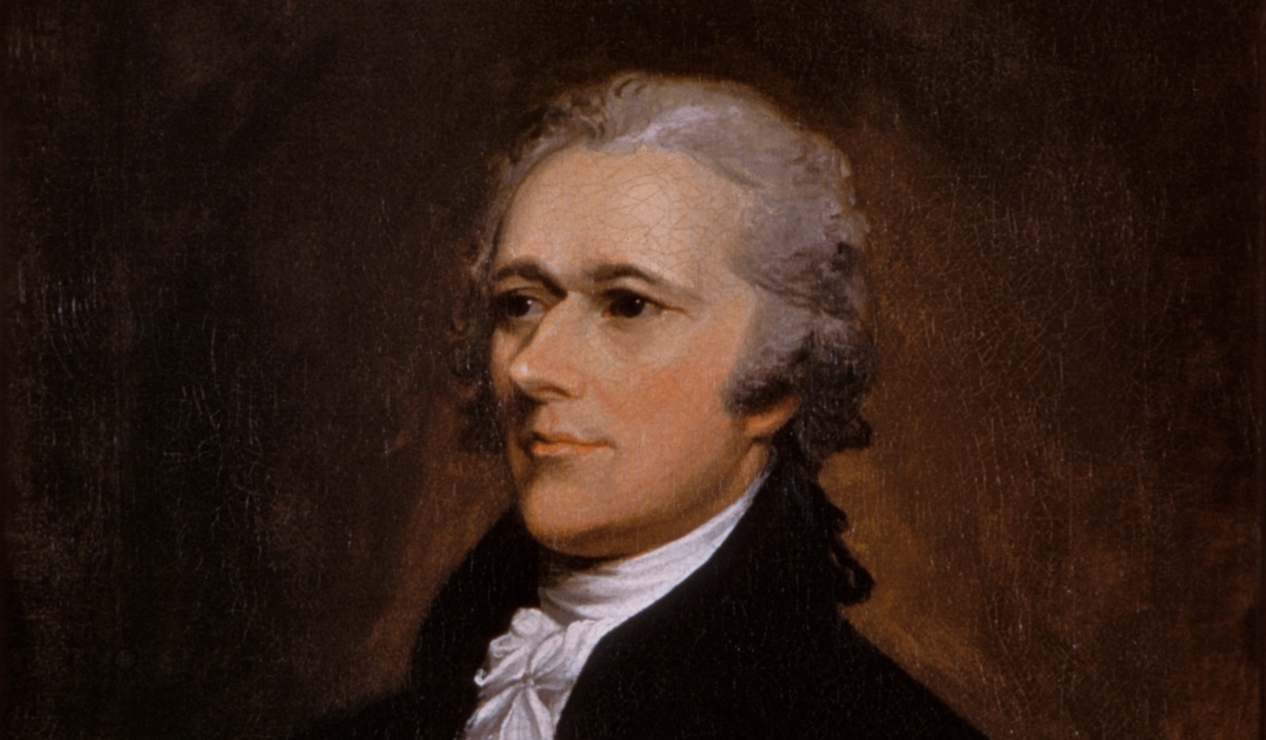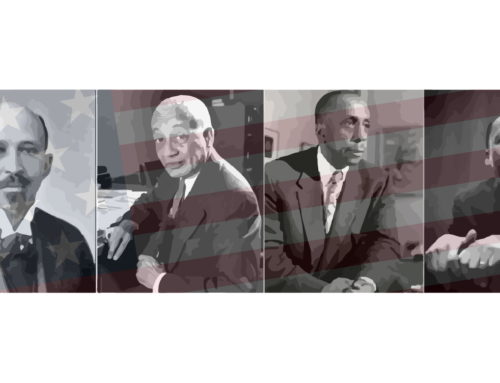By: Nicholas Napolio
[perfectpullquote align=”full” cite=”Alexander Hamilton, Federalist Number One” link=”” color=”” class=”” size=”16″]It has been frequently remarked that it seems to have been reserved to the people of this country, by their conduct and example, to decide the important question, whether societies of men are really capable or not of establishing good government from reflection and choice, or whether they are forever destined to depend for their political constitutions on accident and force.[/perfectpullquote]
This is how Alexander Hamilton poses the great question of what kind of government is best to the people of the newly formed United States. Federalist Number One, the first of eighty-five essays written by Hamilton, James Madison, and John Jay, is the introductory essay in which Hamilton frames the debate surrounding the ratification of a new Constitution to replace the Articles of Confederation, which the nation saw as ineffective. Hamilton frames the debate in favor of ratification and introduces several ideas important to ensure the prosperity of the United States—ideas that are still discussed and debated today, such as federalism, individual liberty, and the separation of powers. Much contemporary commentary on The Federalist Papers analyzes the authors’ political theories, critiques the ideas they present, or seeks to apply their ideas to current issues. Fewer commentators analyze the ways in which the authors’ ideas are presented and of their rhetorical strategies, which is the focus of this article. The Federalist Papers will be seen here less as a work of doctrinal political theory, and primarily as a rhetorician’s political attempt to persuade its contemporaneous readers of the rightness of its cause.
The political purpose of The Federalist Papers was to persuade the people to ratify the Constitution; as such, it employs ample rhetoric, which is the practice of writing or speaking persuasively. Hamilton opens the series of essays by asking the people whether “men are really capable or not of establishing good government,” and rhetorically reducing the answer to one of two dichotomous propositions: that men may establish good government from reflection and choice, or that men may only establish (an implied) bad government through accident and force. Beyond reducing arguments to dichotomies, that is, to two sides that are entirely opposite and mutually exclusive, Hamilton employs antithetical rhetoric throughout Federalist Number One as a means to stress the great crossroad facing the United States in the late 18th Century and to introduce ideas important to it. Through the rhetorical device of antithesis, that is, of presenting opposing ideas, words, or phrases in the same sentence or at least very close to each other, Hamilton highlights the important question facing the new nation, and frames the question as having two mutually exclusive sides from which the debaters must choose.
Hamilton employs antithesis in the second sentence where he discusses the consequences for the United States of ratifying the new Constitution. He writes that ratification will affect “the safety and welfare of the parts of which it is composed” and “the fate of an empire” (emphasis added). Here, by contrasting the parts of the nation with the nation as a whole, Hamilton introduces federalism and defends the new Constitution as a means to promote both the states’ and the nation’s prosperity. Hamilton’s use of antithesis, as opposed to diction where either the states would prosper as a result of the nation’s prosperity or the nation would prosper as a result of the states’ prosperity, is an important rhetorical strategy used to highlight the independence of the states from the national government and further to argue that each will prosper not because of the other’s prosperity, but rather because of the new Constitution.
The following sentence, quoted in its entirety in the article’s epigraph, introduces Hamilton’s most general and theoretical question: can the people of this new nation establish a good government through enlightened deliberation? In this passage, Hamilton uses antithesis in several places. First, he contrasts “good” government with its opposite (yet he never defines whether its opposite is “bad,” “unjust,” “despotic,” etc.; “not good” will then be used to represent its opposite), thus implicitly arguing that not accepting his argument means accepting “not good” government.
Next, he contrasts the means through which government can be formed. He writes that good government can be established through “reflection and choice,” echoing Rousseau’s theory that legitimate governmental authority resides in the people and that they must contract with some governmental body to delegate authority through an expression of the general will which is often a result of public deliberation. The alternative, “not good” government, is said to be established through “accident and force,” perhaps alluding to Hume’s more cynical conception of the original contract that governments are established through conquest and usurpation, not through mutual agreement between the people and the government as Rousseau argues.
A final and subtler antithesis in this passage is the contrasting of “really capable” with “forever destined.” Hamilton implies, if his question is answered affirmatively, that societies may actively establish a good government, and he relegates the opposition to a kind of passivity where the people are subjected to a new political order by a destiny that has pervaded humankind since it first established governments (again perhaps alluding to Hume’s theory of conquest and usurpation). He argues that to ratify the Constitution is to actively ensure prosperity, and to vote against the Constitution is to tacitly endorse the perpetual cycle of “not good” government.
Next, Hamilton seeks to explain the individual interests that may influence people to ratify or not to ratify the Constitution. He introduces this through antithesis; he writes: “the idea will add the inducements of philanthropy to those of patriotism” (emphasis added). Though this passage’s relation to the special interests behind a vote to ratify or not to ratify the Constitution seems obscure, later passages clarify its meaning. Philanthropy, the desire to promote the welfare of others, and patriotism, the desire to promote the welfare of the state, are combined by Hamilton on the one hand to strengthen his earlier assertion that the people will contract with the state and thus align their interests and incentives, and on the other hand, to maintain their disparateness by starting with the assumption that the desire to promote the welfare of others and of the state are not the same, since to add two things together, they must begin as two separate things. Thus, Hamilton introduces the importance of individual liberty in the new Constitution.
From this individual liberty, Hamilton separates out the individual interests of the people of the new nation and then condenses them into the general interests of classes of people. This condensation, he argues, is “among the most formidable of the obstacles which the new Constitution will […] encounter.” Through antithesis, he describes the two classes of interests that will endanger the new Constitution: “a certain class of men” afraid of the “diminution” of their status and “another class of men” hoping to “aggrandize” theirs; that is, the wealthy and powerful, and the poor and powerless. Then, however, Hamilton intriguingly takes the idea of general interests of classes of people and argues against his prior statement—that it is a formidable obstacle—by stating that having an individual or particular interest should not be construed to mean that those interests are necessarily in the wrong or will implicitly lead to “not good” government.
Again, this distinction is introduced through antithesis when Hamilton writes, “so numerous indeed and so powerful are the causes which serve to give a false bias to the judgment, that we, upon many occasions, see wise and good men on the wrong as well as the right side of questions of the first magnitude of society” (emphasis added). While, on its face, this statement is used to argue that wise men with individualized passions may make wrong decisions, it also implicitly argues that individualized passions are not the sole causal variable behind wrong decisions. The notion that individualized passions are not the sole cause of wrong decisions is further highlighted in the antithetical passage: “ambition, avarice, personal animosity, party opposition, and many other motives not more laudable than these, are apt to operate as well upon those who support and those who oppose the right side of a question” (emphasis added), meaning that wrong or right decisions are reached despite individualized passions, rather than because of them.
Hamilton then turns the idea of individualized passions into a discussion of political parties, or factions. He introduces political parties through dichotomy and antithesis. He writes of two parties: one that prefers a strong government and one that prefers liberty—a classic, dichotomous battle between authority and liberty. Then, in an antithetical couplet, he pits them against one another:
“An enlightened zeal for the energy and efficiency of government will be stigmatized as the offspring of a temper fond of despotic power and hostile to the principles of liberty. An overscrupulous jealousy of danger to the rights of the people, which is more commonly the fault of the head than of the heart, will be represented as mere presence and artifice, the stale bait for popularity at the expense of the public good.”
Hamilton’s political views come through as he agrees with the more authoritarian argument and writes, again using antithesis: “a dangerous ambition more often lurks behind the zeal for the rights of the people than under the forbidding appearance of zeal for the firmness and efficiency of government” (emphasis added). He expands upon that passage by stating that history shows that “zeal for the rights of the people” is more likely to lead to despotism.
Throughout Federalist Number One, Hamilton argues that the reader (i.e. those to vote on the new Constitution) ought not to be overly influenced by arguments from either side of the ratification debates, yet in concluding his essay, he acknowledges that the following eighty-four essays will be argumentative in favor of ratification. Again employing antithesis, he tells his reader: “I will not amuse you with an appearance of deliberation when I have decided,” (emphasis added), revealing his punditry. He then explains that he will not dwell on the motives behind his argument, but rather will expose his argument to the people and let them evaluate it. Thus Hamilton introduces the final antithetical topic of his essay: freedom of thought and the importance of the free exchange of ideas. In a telling (and antithetical) passage, he writes: “my motives must remain in the depository of my own breast. My arguments will be open to all, and may be judged of by all” (emphasis added). Here, Hamilton argues for the freedom of thought and of conscience, while still maintaining that once those thoughts escape the mind, the expressive manifestation of those thoughts (i.e. arguments) ought to be judged and criticized by others with thought and conscience.
Hamilton’s rhetoric, particularly his use of antithesis conveys a sense of a fundamental conflict to be resolved and a sense of duty to pick a side in the ratification battle by pitting the two against each other as antithetical. Through it, he not only sets the dichotomous tone of the Constitution’s ratification, but he also introduces important questions that the Constitution will address, namely: federalism, the respective duties of the people and of the government, individual liberty, political parties, the clash between authority and liberty, and the freedom of thought and expression. He does not introduce and discuss these ideas objectively, nor even ostensibly objectively as other political theorists do in their treatises or discourses, rather The Federalist Papers are concrete political arguments, not abstract political theory, and Hamilton’s use of rhetoric is intended to persuade a specific audience, the citizens of the United States, to take a specific action and ratify the new Constitution.
Nicholas Napolio is a student in Political Science and Philosophy at Northeastern University. You can follow him on Twitter or Academia.
Image: Detail from Portrait of Alexander Hamilton by John Trumbell, 1806










In number 9, Hamilton used the word “faction” with increasing frequency, as if to set the stage for James Madison’s first paper, number 10 , the most widely remembered essay in the collection, and one of the most powerful brief pieces of political theory ever written. I would compare